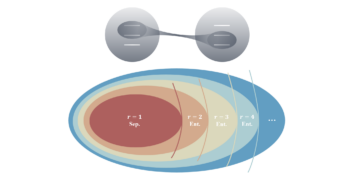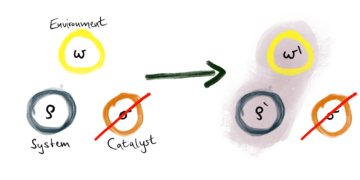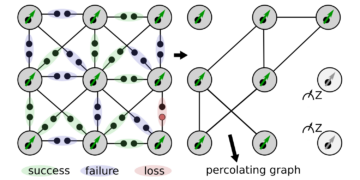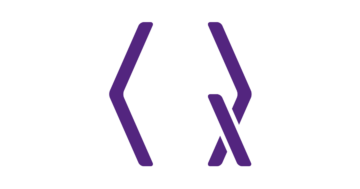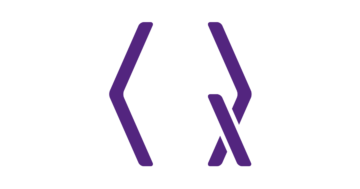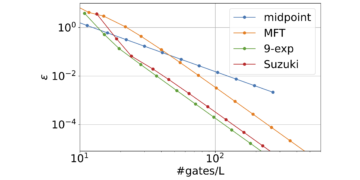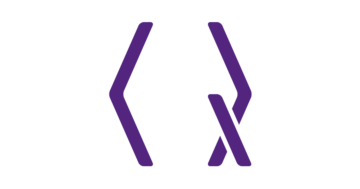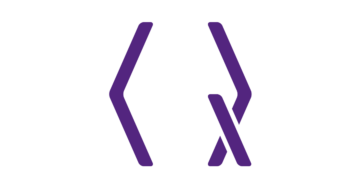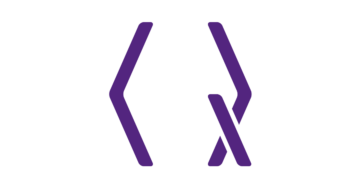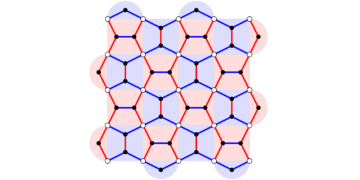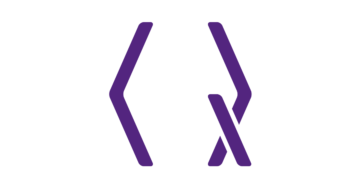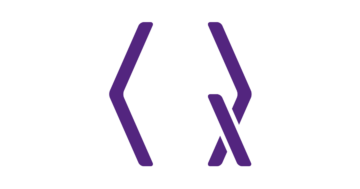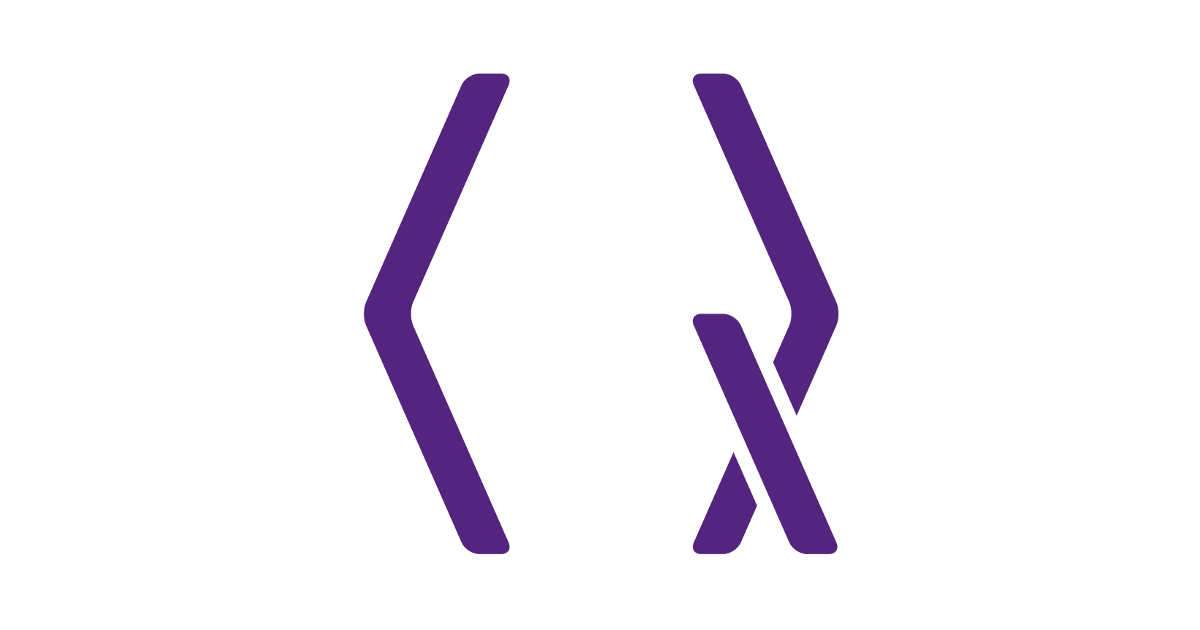
École Polytechnique Fédérale de Lausanne (EPFL), Institute of Physics, CH-1015 Lausanne, Switzerland
Center for Quantum Science and Engineering, École Polytechnique Fédérale de Lausanne (EPFL), CH-1015 Lausanne, Switzerland
Find this paper interesting or want to discuss? Scite or leave a comment on SciRate.
Abstract
Local Hamiltonians of fermionic systems on a lattice can be mapped onto local qubit Hamiltonians. Maintaining the locality of the operators comes at the expense of increasing the Hilbert space with auxiliary degrees of freedom. In order to retrieve the lower-dimensional physical Hilbert space that represents fermionic degrees of freedom, one must satisfy a set of constraints. In this work, we introduce quantum circuits that exactly satisfy these stringent constraints. We demonstrate how maintaining locality allows one to carry out a Trotterized time-evolution with constant circuit depth per time step. Our construction is particularly advantageous to simulate the time evolution operator of fermionic systems in d$gt$1 dimensions. We also discuss how these families of circuits can be used as variational quantum states, focusing on two approaches: a first one based on general constant-fermion-number gates, and a second one based on the Hamiltonian variational ansatz where the eigenstates are represented by parametrized time-evolution operators. We apply our methods to the problem of finding the ground state and time-evolved states of the $t$-$V$ model.
► BibTeX data
► References
[1] Pascual Jordan and Eugene Paul Wigner. “Über das paulische äquivalenzverbot”. In The Collected Works of Eugene Paul Wigner. Pages 109–129. Springer (1993).
https://doi.org/10.1007/BF01331938
[2] Chris Cade, Lana Mineh, Ashley Montanaro, and Stasja Stanisic. “Strategies for solving the fermi-hubbard model on near-term quantum computers”. Phys. Rev. B 102, 235122 (2020).
https://doi.org/10.1103/PhysRevB.102.235122
[3] James D Whitfield, Vojtěch Havlíček, and Matthias Troyer. “Local spin operators for fermion simulations”. Physical Review A 94, 030301 (2016).
https://doi.org/10.1103/PhysRevA.94.030301
[4] Vojtěch Havlíček, Matthias Troyer, and James D. Whitfield. “Operator locality in the quantum simulation of fermionic models”. Phys. Rev. A 95, 032332 (2017).
https://doi.org/10.1103/PhysRevA.95.032332
[5] Jan Hermann, James Spencer, Kenny Choo, Antonio Mezzacapo, W. M. C. Foulkes, David Pfau, Giuseppe Carleo, and Frank Noé. “Ab-initio quantum chemistry with neural-network wavefunctions” (2022).
arXiv:2208.12590
[6] T. Hensgens, T. Fujita, L. Janssen, Xiao Li, C. J. Van Diepen, C. Reichl, W. Wegscheider, S. Das Sarma, and L. M. K. Vandersypen. “Quantum simulation of a fermi–hubbard model using a semiconductor quantum dot array”. Nature 548, 70–73 (2017).
https://doi.org/10.1038/nature23022
[7] Xiqiao Wang, Ehsan Khatami, Fan Fei, Jonathan Wyrick, Pradeep Namboodiri, Ranjit Kashid, Albert F. Rigosi, Garnett Bryant, and Richard Silver. “Experimental realization of an extended fermi-hubbard model using a 2d lattice of dopant-based quantum dots”. Nature Communications 13, 6824 (2022).
https://doi.org/10.1038/s41467-022-34220-w
[8] Peter T. Brown, Debayan Mitra, Elmer Guardado-Sanchez, Reza Nourafkan, Alexis Reymbaut, Charles-David Hébert, Simon Bergeron, A.-M. S. Tremblay, Jure Kokalj, David A. Huse, Peter Schauß, and Waseem S. Bakr. “Bad metallic transport in a cold atom fermi-hubbard system”. Science 363, 379–382 (2019). arXiv:https://www.science.org/doi/pdf/10.1126/science.aat4134.
https://doi.org/10.1126/science.aat4134
arXiv:https://www.science.org/doi/pdf/10.1126/science.aat4134
[9] Stasja Stanisic, Jan Lukas Bosse, Filippo Maria Gambetta, Raul A. Santos, Wojciech Mruczkiewicz, Thomas E. O’Brien, Eric Ostby, and Ashley Montanaro. “Observing ground-state properties of the fermi-hubbard model using a scalable algorithm on a quantum computer”. Nature Communications 13, 5743 (2022).
https://doi.org/10.1038/s41467-022-33335-4
[10] Frank Arute, Kunal Arya, Ryan Babbush, Dave Bacon, Joseph C. Bardin, Rami Barends, Andreas Bengtsson, Sergio Boixo, Michael Broughton, Bob B. Buckley, David A. Buell, Brian Burkett, Nicholas Bushnell, Yu Chen, Zijun Chen, Yu-An Chen, Ben Chiaro, Roberto Collins, Stephen J. Cotton, William Courtney, Sean Demura, Alan Derk, Andrew Dunsworth, Daniel Eppens, Thomas Eckl, Catherine Erickson, Edward Farhi, Austin Fowler, Brooks Foxen, Craig Gidney, Marissa Giustina, Rob Graff, Jonathan A. Gross, Steve Habegger, Matthew P. Harrigan, Alan Ho, Sabrina Hong, Trent Huang, William Huggins, Lev B. Ioffe, Sergei V. Isakov, Evan Jeffrey, Zhang Jiang, Cody Jones, Dvir Kafri, Kostyantyn Kechedzhi, Julian Kelly, Seon Kim, Paul V. Klimov, Alexander N. Korotkov, Fedor Kostritsa, David Landhuis, Pavel Laptev, Mike Lindmark, Erik Lucero, Michael Marthaler, Orion Martin, John M. Martinis, Anika Marusczyk, Sam McArdle, Jarrod R. McClean, Trevor McCourt, Matt McEwen, Anthony Megrant, Carlos Mejuto-Zaera, Xiao Mi, Masoud Mohseni, Wojciech Mruczkiewicz, Josh Mutus, Ofer Naaman, Matthew Neeley, Charles Neill, Hartmut Neven, Michael Newman, Murphy Yuezhen Niu, Thomas E. O’Brien, Eric Ostby, Bálint Pató, Andre Petukhov, Harald Putterman, Chris Quintana, Jan-Michael Reiner, Pedram Roushan, Nicholas C. Rubin, Daniel Sank, Kevin J. Satzinger, Vadim Smelyanskiy, Doug Strain, Kevin J. Sung, Peter Schmitteckert, Marco Szalay, Norm M. Tubman, Amit Vainsencher, Theodore White, Nicolas Vogt, Z. Jamie Yao, Ping Yeh, Adam Zalcman, and Sebastian Zanker. “Observation of separated dynamics of charge and spin in the fermi-hubbard model” (2020).
[11] Ian D. Kivlichan, Jarrod McClean, Nathan Wiebe, Craig Gidney, Alán Aspuru-Guzik, Garnet Kin-Lic Chan, and Ryan Babbush. “Quantum simulation of electronic structure with linear depth and connectivity”. Phys. Rev. Lett. 120, 110501 (2018).
https://doi.org/10.1103/PhysRevLett.120.110501
[12] Philippe Corboz, Román Orús, Bela Bauer, and Guifré Vidal. “Simulation of strongly correlated fermions in two spatial dimensions with fermionic projected entangled-pair states”. Phys. Rev. B 81, 165104 (2010).
https://doi.org/10.1103/PhysRevB.81.165104
[13] Román Orús. “Tensor networks for complex quantum systems”. Nature Reviews Physics 1, 538–550 (2019).
https://doi.org/10.1038/s42254-019-0086-7
[14] Charles Derby, Joel Klassen, Johannes Bausch, and Toby Cubitt. “Compact fermion to qubit mappings”. Phys. Rev. B 104, 035118 (2021).
https://doi.org/10.1103/PhysRevB.104.035118
[15] Zhang Jiang, Amir Kalev, Wojciech Mruczkiewicz, and Hartmut Neven. “Optimal fermion-to-qubit mapping via ternary trees with applications to reduced quantum states learning”. Quantum 4, 276 (2020).
https://doi.org/10.22331/q-2020-06-04-276
[16] Sergey B Bravyi and Alexei Yu Kitaev. “Fermionic quantum computation”. Annals of Physics 298, 210–226 (2002).
https://doi.org/10.1006/aphy.2002.6254
[17] Mark Steudtner and Stephanie Wehner. “Fermion-to-qubit mappings with varying resource requirements for quantum simulation”. New Journal of Physics 20, 063010 (2018).
https://doi.org/10.1088/1367-2630/aac54f
[18] Kanav Setia, Sergey Bravyi, Antonio Mezzacapo, and James D Whitfield. “Superfast encodings for fermionic quantum simulation”. Physical Review Research 1, 033033 (2019).
https://doi.org/10.1103/PhysRevResearch.1.033033
[19] John Preskill. “Quantum computing in the NISQ era and beyond”. Quantum 2, 79 (2018).
https://doi.org/10.22331/q-2018-08-06-79
[20] Jacek Wosiek. “A local representation for fermions on a lattice”. Technical report. Univ., Physics Department (1981). url: inspirehep.net/literature/169185.
https://inspirehep.net/literature/169185
[21] RC Ball. “Fermions without fermion fields”. Physical review letters 95, 176407 (2005).
https://doi.org/10.1103/PhysRevLett.95.176407
[22] Frank Verstraete and J Ignacio Cirac. “Mapping local hamiltonians of fermions to local hamiltonians of spins”. Journal of Statistical Mechanics: Theory and Experiment 2005, P09012 (2005).
https://doi.org/10.1088/1742-5468/2005/09/P09012
[23] Hoi Chun Po. “Symmetric Jordan-Wigner transformation in higher dimensions” (2021).
[24] Kanav Setia and James D Whitfield. “Bravyi-kitaev superfast simulation of electronic structure on a quantum computer”. The Journal of chemical physics 148, 164104 (2018).
https://doi.org/10.1063/1.5019371
[25] Yu-An Chen, Anton Kapustin, and Đorđe Radičević. “Exact bosonization in two spatial dimensions and a new class of lattice gauge theories”. Annals of Physics 393, 234–253 (2018).
https://doi.org/10.1016/j.aop.2018.03.024
[26] Yu-An Chen and Yijia Xu. “Equivalence between fermion-to-qubit mappings in two spatial dimensions” (2022).
[27] Arkadiusz Bochniak and Błażej Ruba. “Bosonization based on Clifford algebras and its gauge theoretic interpretation”. Journal of High Energy Physics 2020, 1–36 (2020).
https://doi.org/10.1103/PhysRevD.102.114502
[28] Kangle Li and Hoi Chun Po. “Higher-dimensional jordan-wigner transformation and auxiliary majorana fermions”. Phys. Rev. B 106, 115109 (2022).
https://doi.org/10.1103/PhysRevB.106.115109
[29] Jannes Nys and Giuseppe Carleo. “Variational solutions to fermion-to-qubit mappings in two spatial dimensions”. Quantum 6, 833 (2022).
https://doi.org/10.22331/q-2022-10-13-833
[30] Xiao-Gang Wen. “Quantum orders in an exact soluble model”. Physical review letters 90, 016803 (2003).
https://doi.org/10.1103/PhysRevLett.90.016803
[31] J. Pablo Bonilla Ataides, David K. Tuckett, Stephen D. Bartlett, Steven T. Flammia, and Benjamin J. Brown. “The xzzx surface code”. Nature Communications 12, 2172 (2021).
https://doi.org/10.1038/s41467-021-22274-1
[32] Filippo Vicentini, Damian Hofmann, Attila Szabó, Dian Wu, Christopher Roth, Clemens Giuliani, Gabriel Pescia, Jannes Nys, Vladimir Vargas-Calderón, Nikita Astrakhantsev, and Giuseppe Carleo. “NetKet 3: Machine Learning Toolbox for Many-Body Quantum Systems”. SciPost Phys. CodebasesPage 7 (2022).
https://doi.org/10.21468/SciPostPhysCodeb.7
[33] Panagiotis Kl. Barkoutsos, Jerome F. Gonthier, Igor Sokolov, Nikolaj Moll, Gian Salis, Andreas Fuhrer, Marc Ganzhorn, Daniel J. Egger, Matthias Troyer, Antonio Mezzacapo, Stefan Filipp, and Ivano Tavernelli. “Quantum algorithms for electronic structure calculations: Particle-hole hamiltonian and optimized wave-function expansions”. Phys. Rev. A 98, 022322 (2018).
https://doi.org/10.1103/PhysRevA.98.022322
[34] Bryan T. Gard, Linghua Zhu, George S. Barron, Nicholas J. Mayhall, Sophia E. Economou, and Edwin Barnes. “Efficient symmetry-preserving state preparation circuits for the variational quantum eigensolver algorithm”. npj Quantum Information 6, 10 (2020).
https://doi.org/10.1038/s41534-019-0240-1
[35] Dave Wecker, Matthew B. Hastings, and Matthias Troyer. “Progress towards practical quantum variational algorithms”. Phys. Rev. A 92, 042303 (2015).
https://doi.org/10.1103/PhysRevA.92.042303
[36] M. Ganzhorn, D.J. Egger, P. Barkoutsos, P. Ollitrault, G. Salis, N. Moll, M. Roth, A. Fuhrer, P. Mueller, S. Woerner, I. Tavernelli, and S. Filipp. “Gate-efficient simulation of molecular eigenstates on a quantum computer”. Phys. Rev. Appl. 11, 044092 (2019).
https://doi.org/10.1103/PhysRevApplied.11.044092
[37] P. J. J. O’Malley, R. Babbush, I. D. Kivlichan, J. Romero, J. R. McClean, R. Barends, J. Kelly, P. Roushan, A. Tranter, N. Ding, B. Campbell, Y. Chen, Z. Chen, B. Chiaro, A. Dunsworth, A. G. Fowler, E. Jeffrey, E. Lucero, A. Megrant, J. Y. Mutus, M. Neeley, C. Neill, C. Quintana, D. Sank, A. Vainsencher, J. Wenner, T. C. White, P. V. Coveney, P. J. Love, H. Neven, A. Aspuru-Guzik, and J. M. Martinis. “Scalable quantum simulation of molecular energies”. Phys. Rev. X 6, 031007 (2016).
https://doi.org/10.1103/PhysRevX.6.031007
[38] Zhang Jiang, Kevin J. Sung, Kostyantyn Kechedzhi, Vadim N. Smelyanskiy, and Sergio Boixo. “Quantum algorithms to simulate many-body physics of correlated fermions”. Phys. Rev. Appl. 9, 044036 (2018).
https://doi.org/10.1103/PhysRevApplied.9.044036
[39] Laura Clinton, Johannes Bausch, and Toby Cubitt. “Hamiltonian simulation algorithms for near-term quantum hardware”. Nature Communications 12, 4989 (2021).
https://doi.org/10.1038/s41467-021-25196-0
[40] William J. Huggins, Jarrod R. McClean, Nicholas C. Rubin, Zhang Jiang, Nathan Wiebe, K. Birgitta Whaley, and Ryan Babbush. “Efficient and noise resilient measurements for quantum chemistry on near-term quantum computers”. npj Quantum Information 7, 23 (2021).
https://doi.org/10.1038/s41534-020-00341-7
[41] Ophelia Crawford, Barnaby van Straaten, Daochen Wang, Thomas Parks, Earl Campbell, and Stephen Brierley. “Efficient quantum measurement of Pauli operators in the presence of finite sampling error”. Quantum 5, 385 (2021).
https://doi.org/10.22331/q-2021-01-20-385
[42] Pranav Gokhale, Olivia Angiuli, Yongshan Ding, Kaiwen Gui, Teague Tomesh, Martin Suchara, Margaret Martonosi, and Frederic T. Chong. “$O(N^3)$ measurement cost for variational quantum eigensolver on molecular hamiltonians”. IEEE Transactions on Quantum Engineering 1, 1–24 (2020).
https://doi.org/10.1109/TQE.2020.3035814
[43] Artur F Izmaylov, Tzu-Ching Yen, and Ilya G Ryabinkin. “Revising the measurement process in the variational quantum eigensolver: is it possible to reduce the number of separately measured operators?”. Chemical science 10, 3746–3755 (2019).
https://doi.org/10.1039/C8SC05592K
[44] Pranav Gokhale, Olivia Angiuli, Yongshan Ding, Kaiwen Gui, Teague Tomesh, Martin Suchara, Margaret Martonosi, and Frederic T. Chong. “Minimizing state preparations in variational quantum eigensolver by partitioning into commuting families” (2019).
[45] Zhenyu Cai. “Resource estimation for quantum variational simulations of the hubbard model”. Phys. Rev. Appl. 14, 014059 (2020).
https://doi.org/10.1103/PhysRevApplied.14.014059
[46] David B. Kaplan and Jesse R. Stryker. “Gauss’s law, duality, and the hamiltonian formulation of u(1) lattice gauge theory”. Phys. Rev. D 102, 094515 (2020).
https://doi.org/10.1103/PhysRevD.102.094515
[47] Giulia Mazzola, Simon V. Mathis, Guglielmo Mazzola, and Ivano Tavernelli. “Gauge-invariant quantum circuits for $u$(1) and yang-mills lattice gauge theories”. Phys. Rev. Res. 3, 043209 (2021).
https://doi.org/10.1103/PhysRevResearch.3.043209
[48] Tatiana A. Bespalova and Oleksandr Kyriienko. “Quantum simulation and ground state preparation for the honeycomb kitaev model” (2021).
[49] Ville Bergholm, Josh Izaac, Maria Schuld, Christian Gogolin, Shahnawaz Ahmed, Vishnu Ajith, M. Sohaib Alam, Guillermo Alonso-Linaje, B. AkashNarayanan, Ali Asadi, Juan Miguel Arrazola, Utkarsh Azad, Sam Banning, Carsten Blank, Thomas R Bromley, Benjamin A. Cordier, Jack Ceroni, Alain Delgado, Olivia Di Matteo, Amintor Dusko, Tanya Garg, Diego Guala, Anthony Hayes, Ryan Hill, Aroosa Ijaz, Theodor Isacsson, David Ittah, Soran Jahangiri, Prateek Jain, Edward Jiang, Ankit Khandelwal, Korbinian Kottmann, Robert A. Lang, Christina Lee, Thomas Loke, Angus Lowe, Keri McKiernan, Johannes Jakob Meyer, J. A. Montañez-Barrera, Romain Moyard, Zeyue Niu, Lee James O’Riordan, Steven Oud, Ashish Panigrahi, Chae-Yeun Park, Daniel Polatajko, Nicolás Quesada, Chase Roberts, Nahum Sá, Isidor Schoch, Borun Shi, Shuli Shu, Sukin Sim, Arshpreet Singh, Ingrid Strandberg, Jay Soni, Antal Száva, Slimane Thabet, Rodrigo A. Vargas-Hernández, Trevor Vincent, Nicola Vitucci, Maurice Weber, David Wierichs, Roeland Wiersema, Moritz Willmann, Vincent Wong, Shaoming Zhang, and Nathan Killoran. “Pennylane: Automatic differentiation of hybrid quantum-classical computations” (2018).
Cited by
[1] Liubov A. Markovich, Attaallah Almasi, Sina Zeytinoğlu, and Johannes Borregaard, “Quantum memory assisted observable estimation”, arXiv:2212.07710, (2022).
The above citations are from SAO/NASA ADS (last updated successfully 2023-02-21 17:19:13). The list may be incomplete as not all publishers provide suitable and complete citation data.
Could not fetch Crossref cited-by data during last attempt 2023-02-21 17:19:10: Could not fetch cited-by data for 10.22331/q-2023-02-21-930 from Crossref. This is normal if the DOI was registered recently.
This Paper is published in Quantum under the Creative Commons Attribution 4.0 International (CC BY 4.0) license. Copyright remains with the original copyright holders such as the authors or their institutions.
- SEO Powered Content & PR Distribution. Get Amplified Today.
- Platoblockchain. Web3 Metaverse Intelligence. Knowledge Amplified. Access Here.
- Source: https://quantum-journal.org/papers/q-2023-02-21-930/
- 1
- 10
- 102
- 11
- 2016
- 2017
- 2018
- 2019
- 2020
- 2021
- 2022
- 28
- 2D
- 39
- 7
- 9
- 98
- a
- above
- ABSTRACT
- access
- Adam
- affiliations
- Alan
- Alexander
- algorithm
- algorithms
- All
- allows
- and
- Anthony
- applications
- Apply
- approaches
- Array
- atom
- austin
- author
- authors
- Automatic
- ball
- based
- Benjamin
- between
- Beyond
- Break
- Brian
- Bryan
- carry
- Catherine
- charge
- Charles
- chase
- chemical
- chemistry
- chen
- Choo
- Chris
- Christopher
- class
- code
- Collins
- comment
- Commons
- Communications
- commuting
- complete
- complex
- computation
- computations
- computer
- computers
- computing
- Connectivity
- constant
- constraints
- construction
- copyright
- Cost
- could
- Craig
- Daniel
- data
- Dave
- David
- demonstrate
- Den
- Department
- depth
- Diego
- dimensions
- discuss
- DOT
- during
- dynamics
- Edward
- Edwin
- Electronic
- energy
- Engineering
- Era
- error
- Ether (ETH)
- evolution
- exactly
- expense
- experiment
- families
- fan
- fei
- Fields
- finding
- First
- focusing
- Freedom
- from
- Gates
- General
- George
- gross
- Ground
- Hardware
- harvard
- High
- higher
- holders
- Hong
- How
- HTTPS
- Hybrid
- hybrid quantum-classical
- IEEE
- in
- increasing
- information
- Institute
- institutions
- interesting
- International
- interpretation
- introduce
- IT
- jack
- Jamie
- Jan
- JavaScript
- John
- Jordan
- journal
- Kim
- LANG
- Last
- Law
- learning
- Leave
- Lee
- License
- List
- local
- love
- machine
- machine learning
- mapping
- Marco
- mark
- Martin
- measurements
- mechanics
- Memory
- methods
- Meyer
- Michael
- model
- models
- molecular
- Month
- Nature
- networks
- New
- Nicolas
- Noise
- normal
- number
- ONE
- open
- operator
- operators
- optimized
- order
- orders
- original
- Paper
- Park
- parks
- particularly
- Paul
- Peter
- Philippe
- physical
- Physics
- ping
- plato
- Plato Data Intelligence
- PlatoData
- PO
- possible
- Practical
- Pradeep
- presence
- Problem
- process
- projected
- properties
- provide
- published
- publisher
- publishers
- Quantum
- Quantum Computer
- quantum computers
- Quantum dot
- Quantum dots
- quantum information
- quantum measurement
- quantum systems
- Qubit
- RAMI
- realization
- recently
- reduce
- Reduced
- references
- registered
- remains
- report
- representation
- represented
- represents
- Requirements
- research
- resilient
- resource
- review
- Reviews
- Richard
- ROBERT
- ruba
- Ryan
- Sam
- scalable
- Science
- Sean
- Second
- semiconductor
- separately
- set
- Silver
- SIM
- Simon
- simulation
- Solutions
- Solving
- Space
- Spatial
- Spin
- spins
- State
- States
- statistical
- Step
- Stephen
- Steve
- strongly
- structure
- Successfully
- such
- suitable
- Surface
- system
- Systems
- Technical
- The
- their
- time
- Title
- to
- Toolbox
- towards
- Transactions
- Transformation
- transport
- Trees
- Trevor
- under
- updated
- URL
- via
- volume
- W
- white
- without
- Work
- works
- wu
- X
- year
- Yen
- zephyrnet

